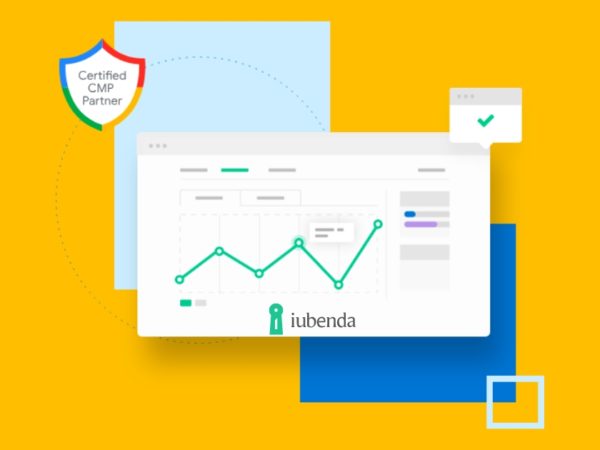Trust is the foundation of every successful connection, and this is never more true than when it comes to your interactions with your customers.
No matter how customers interact with you: online, through mobile apps, or in person, they expect their data to be protected.
A security breach that compromises their information damages the trust you have worked so hard to build and may jeopardize your business. Fragmented identity management puts companies and their clients at risk of costly security breaches.
It is critical for your business to have Customer Identity and Access Management (CIAM) solutions in place because they protect the data of your customers and ensure a consistent customer experience at each level of your organization.
This guide will explain how to protect customer data using the CIAM Tool. Furthermore, we will discuss how customer data is critical for a business and how CIAM software can prove invaluable.
We will also provide some valuable tips on how you can protect customer data with a CIAM solution. Come on, let’s take a look.
Why is Customer Data Precious for Your Business?
According to the Wall Street Journal, there was a 10.3% increase in marketing spending between April 2021 and 2022. It was found in another study that approximately 49% of businesses use consumer data when determining how to promote potential customers.
This illustrates the importance of client data to organizations. Take a closer look at some factors that make consumer data valuable.
#1. Customer Information Equals a Better Customer Experience
To provide your consumers with a wonderful experience, knowing their likes and interests is important. By knowing your clients, you can make every interaction relevant to them.
It is, therefore, necessary to provide people with what they want. All goods and services you provide and the messages you use to contact your customers must meet this standard.
#2. Social Support
Consumers take social proof into account when making purchases. More than 90% of consumers claim to read blogs and social media reviews before making a purchase.
Using customer data, Amazon offers social proof through ratings and reviews of products, enticing customers to buy and demonstrating its commitment to unbiased consumer opinions.
#3. Customer Data = Better Commercial Judgment
It is impossible to make effective strategic decisions without data. Making educated guesses and losing more than you win requires data-driven strategies.
#4. Customer Information = More Successful Marketing
Did you know that the cost of acquiring new customers is five times as high as maintaining existing ones?
A quick and easy way to satisfy your customers is to know their names and whereabouts.
It helps you decide what content to create and how to move forward with marketing. If most of your clients are baby boomers, should you focus on Facebook or Instagram? Would email be a better way to communicate? You need consumer data to answer all of these questions.
Keeping customers is easier if you know them well.
The Role of CIAM in Protecting Confidential Customer Information
CIAM safely protects consumer identities. If your consumer uses the same password for many services and applications without CIAM, they may be at risk of identity theft.
Utilizing push notifications, one-time passwords, or biometric verification, consumer identification and access management solutions confirm a customer’s identity multiple times. Additionally, customers can easily access services and applications thanks to the software solution’s secure login page.
In addition, CIAM’s single-sign-on technology facilitates easy access to all appropriate channels, thereby reducing user experience barriers. A major focus of CIAM’s services is helping clients defend their identities and accounts against malevolent hackers.
Key Features of a CIAM
#1. The Beginning of a Digital Relationship: User On-Boarding
User registration is the first step in a CIAM process that transforms unknown, inactive website visitors into known, registered users. Nonetheless, if the registration process is difficult, consumers will give up, hurting the company’s bottom line.
The registration process must be simple, user-friendly, and secure while gathering critical consumer-identifiable information. Some CIAM solutions offer several methods for proving a user’s identity, such as email verification, which may be used for certain accounts and transactions.
#2. Detecting Fraud
A CIAM system must be able to consume fraud information to select the appropriate authentication techniques and authorize or deny access or transaction completion.
#3. Authentication
CIAM increasingly uses social login, multi-factor authentication (MFA), and adaptive authentication (risk-based authentication) instead of username and password authentication.
By using social login, a user can access a third-party application without registering again. The CIAM system collects identity traits from a user using a third-party IDP, such as Facebook, Twitter, LinkedIn, or Google.
#4. Progressive Profiling
Progressive profiling can help companies build a comprehensive profile of their users over time. User accounts typically have a few characteristics when they are created.
A business may ask for more identifying information from a client after he or she becomes familiar with the company. This may include the firm name, job title, and contact information.
#5. Single Sign-On (SSO)
By using Single Sign-On (SSO), users can access a company’s digital properties with one set of credentials. The use of single sign-on in today’s IAM implementations is becoming increasingly popular.
It is essential that CIAM systems support common federation protocols such as SAML, OAuth, and OIDC between enterprise websites.
#6. Support For All Channels
In today’s world, Internet services are accessed by various devices, including laptops, cell phones, kiosks, gaming systems, and personal digital assistants. It is, therefore, important to prioritize the cross-channel user experience for CIAM systems.
The role of CIAM in an omnichannel environment might include everything from managing customer preferences across channels to authenticating consumers across multiple media.
#7. Management of User Profiles
Through customer self-care portals offered by CIAM solutions, customers and delegated administrators should be able to define their preferences explicitly.
Furthermore, these preferences should be saved in a single customer profile so customers can experience consistent, individualized service across channels.
#8. Privacy and Consent Management
Organizations must follow the laws and guidelines that the government and other business organizations impose regarding collecting user data.
In order to ensure that local data storage and additional privacy mandates are met, CIAM solutions must offer centralized data access governance policies, user interface features that let customers specify specific user-centric preferences, so they can control the way the company uses their data, and other capabilities to guarantee local data storage.
Now, let’s check out some of the best CIAM solutions for your business.
LoginRadius
LoginRadius is a well-known enterprise-grade CIAM platform that focuses on B2C identity management.
<img alt="YouTube video" data-pin-nopin="true" data-src="https://kirelos.com/wp-content/uploads/2022/12/echo/hqdefault.jpg6392f70e322fc.jpg" height="360" loading="lazy" src="data:image/svg xml,” width=”480″>
Several cloud deployment options and on-premises deployment options are available with LoginRadius without requiring any code. The CIAM solution provides SSO and various authentication options, including passwordless login, social, phone, and multi-factor authentication.
Key Features:
- Provides integration with more than 150 cloud applications.
- LoginRadius claims to reduce engineering costs by up to 95% with their ready-to-deploy CIAM solution.
- It is possible to authenticate using MFA, social credentials, or a traditional username/email system.
Okta
Okta is one of the fastest-growing offerings in the customer identity and access management sector. More than 7000 prebuilt integrations make Okta a great choice for SSO and authentication.
In addition, it offers B2B authentication, improved server access, and a universal directory for easier user management. Furthermore, Okta offers free identification trials to both customers and workers.
<img alt="YouTube video" data-pin-nopin="true" data-src="https://kirelos.com/wp-content/uploads/2022/12/echo/hqdefault.jpg6392f70e423b8.jpg" height="360" loading="lazy" src="data:image/svg xml,” width=”480″>
Key Features:
- Customer identity and access management capabilities include lifecycle management, adaptive multi-factor authentication, access gateways, API access management, and others.
- You can make your products safer by using a security technology called adaptive multi-factor authentication (MFA).
- Allows users to log in with their Facebook, Google, Twitter, or LinkedIn accounts.
Ping Identity Platform
Ping Identity is a CIAM platform that provides users with various authentication and access control options.
In addition to SSO, passwordless authentication, and Zero Trust implementation, Ping Identity also offers hybrid deployment options. You can also use it to modernize your old identity management system.
<img alt="YouTube video" data-pin-nopin="true" data-src="https://kirelos.com/wp-content/uploads/2022/12/echo/hqdefault.jpg6392f70e49f11.jpg" height="360" loading="lazy" src="data:image/svg xml,” width=”480″>
Key Features:
- It is possible to control secure access via APIs and apps.
- It uses cutting-edge artificial intelligence algorithms to detect anomalies and secure confidential information and corporate operations.
- Your website and mobile platforms can be monitored and protected against fraud in real time.
- To confirm a user’s identity, businesses can use custom authentication policies.
Frontegg
Using Frontegg, app developers can easily manage their users from the simplest authentication processes to the most sophisticated, including complex organizational structures (multi-tenancy), fine-grained authorization, API-token management, a self-service admin portal, subscription enforcement, single sign-on (SSO), and many more.
<img alt="YouTube video" data-pin-nopin="true" data-src="https://kirelos.com/wp-content/uploads/2022/12/echo/hqdefault.jpg6392f70e5a94a.jpg" height="360" loading="lazy" src="data:image/svg xml,” width=”480″>
Key Features:
- Access Control: Frontegg offers simple access control security for apps, services, and APIs.
- SSO: Integrate Frontegg to support single sign-on (SSO). For total security, it makes use of protocols like SAML and OIDC.
- Multi-Factor Authentication: Frontegg can add multi-factor authentication if you require an additional layer of protection. Frontegg provides a straightforward interface to enable MFA.
- User Management: Users can easily create their organizations by inviting users and members, thanks to Frontegg’s multi-tenant design. For all users, it serves as a dynamic self-service admin portal.
Auth0
Businesses can enhance their security with the help of Auth0, a well-known platform that provides various security services.
For B2C businesses, this platform offers Customer Identity Management solutions such as password management, passwordless registration, anomaly detection, and centralized management.
<img alt="YouTube video" data-pin-nopin="true" data-src="https://kirelos.com/wp-content/uploads/2022/12/echo/hqdefault.jpg6392f70e6220d.jpg" height="360" loading="lazy" src="data:image/svg xml,” width=”480″>
Key Features:
- Provides a wide selection of Quickstarts and SDKs for every platform and development approach.
- Provides multi-factor authentication for customers.
- You can integrate your identification systems consistently across all platforms and properties.
Final Words
CIAM gives businesses more power, allowing them to adapt continuously to the changing needs of customers and companies.
These points must be kept in mind while choosing the appropriate CIAM system for your business, i.e., multi-factor authentication, privacy and compliance, scalability, high availability, APIs, and analytics.
Now you may read about the best CIAM platforms to manage access to data.



